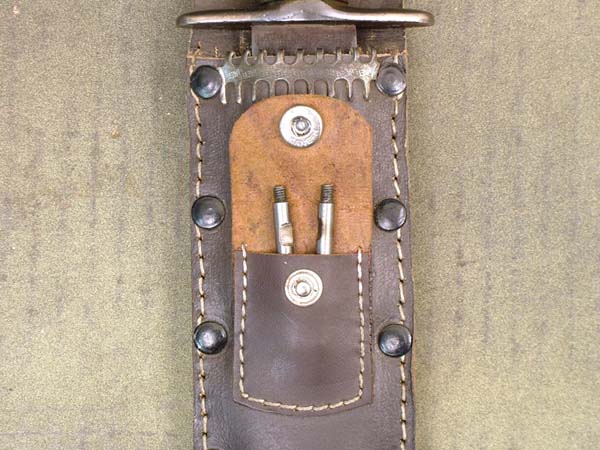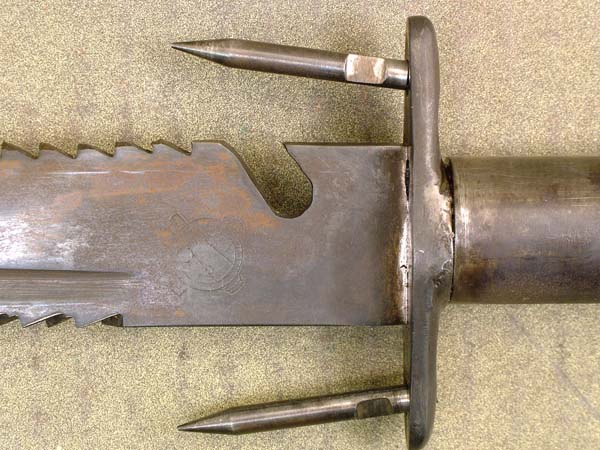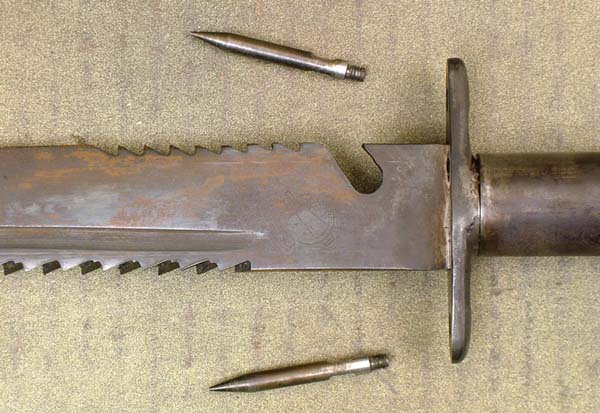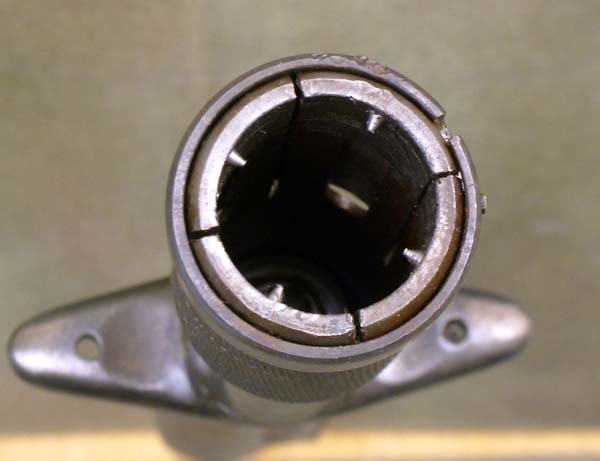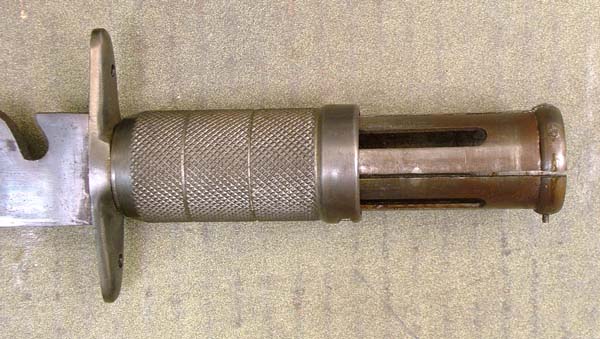 |
|
I was clicking through the IMA (Internation Military Antiques) online catalog and per my normal "British" search something really interesting caught my eye. I'd always heard that the hollow-handled survival knife had come from - or at least been highly marketed by - Jimmy Lile, especially for the Rambo movies. I am a knife dude, but not an astute student of their history, so I may be remiss and Randall may be ahead of him in that regard. In either case, I had no idea that this was a concept that had first been introduced in the late 1800s! Here is the description from the site:
British Colonel Baldock Spear Knife: 1880 The knife has a 9 inch Bowie style blade with blood fullers on both sides. It is equipped with a 4" sawback on the upper side and a 2" saw on the sharp portion of the blade directly in front of the steel cross guard. The hilt is all Steel with a floating two and a half inch Knurled Collar that, when secured in the rear position, will lock onto any wood shaft pushed into the hollow adjustable tubular hilt by means of internal securing spikes. The locking mechanism resembles that of the old Muzzle Loading Socket Bayonet attachment. Extensively copied by Military departments ever since, this is the Original Grand Daddy of the modern Combat Knives. For added effectiveness the all leather thong scabbard which has wire claws for current military pistol belt and a small pocket containing two 1.5” screw-in cross guard spikes for hand-to-hand fighting. The Oldest and the Ultimate: Colonel Baldocks pattern 1880 Fighting Knife complete with Scabbard. Here are some pictures of this cul-de-sac in the evolution of the survival/combat knife.
I love the idea of old Colonel Baldock, sitting around the club - a warmed glass of brandy in his paw - trying to explain the uses of his knife and the usage of the field-expedient spear to defend against both four-legged and two-legged adversary.
What I wouldn't give to see Peachey Carnehan whip one of those out for native-suppression usage in his Kafiristan Campaign.
|
|
Home Full Article List Resources Equipment The Shrine Copyright 2008-2014, The Orion Foundation |


